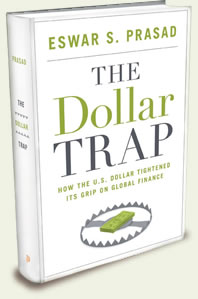Preface
In Chapter 11, I review some attempts to create global safety nets that would offer protection from crises and other episodes of extreme volatility, thereby reducing countries’ incentives to self-insure by accumulating foreign exchange reserves. The International Monetary Fund (IMF) has created new lending programs, with guaranteed access to money in bad times. These programs are meant to function more like insurance schemes, rather than as traditional loan programs that require countries to meet tough policy conditions. There have been few takers for these insurance schemes, perhaps because there is a stigma attached to preemptively seeking the IMF’s assistance.
Of course, the IMF is not the only game in town. During the financial crisis, the U.S. Federal Reserve offered a few foreign central banks access to dollars. Those central banks were then able to provide dollars to commercial banks in their countries that suddenly found themselves deprived of dollar funding. But such ad hoc lines of credit are nowhere near enough to meet the global demand for dollars.
Because these attempts at obviating the need for self-insurance by individual countries have not proven successful, I briefly summarize a proposal for a simple global insurance scheme that would solve many conceptual problems that have bedeviled other collective approaches. However, the world does not yet appear ready for a proposal that is technically simple but could shake up existing institutional structures. The clutches of the dollar trap remain sticky.
Part Four: Currency Competition
The final part of the book evaluates potential competitors to the dollar and sums up the dollar’s prospects. Countries’ desire for insurance through accumulation of safe assets, and the ability of the U.S. to provide purportedly safe assets in prodigious amounts that meet the demand, suggest that the dollar’s position is secure. Still, there are competitors to the dollar that are beginning to flex their muscles.
Chapter 12 critically evaluates the much-hyped prospects of China’s currency, the renminbi, displacing the dollar. China is already the second-largest economy in the world and is on track to become the world’s largest economy within the next decade. The Chinese government is taking aggressive steps to promote the international use of its currency. This chapter makes the case that the renminbi is on its way to becoming a viable reserve currency.

